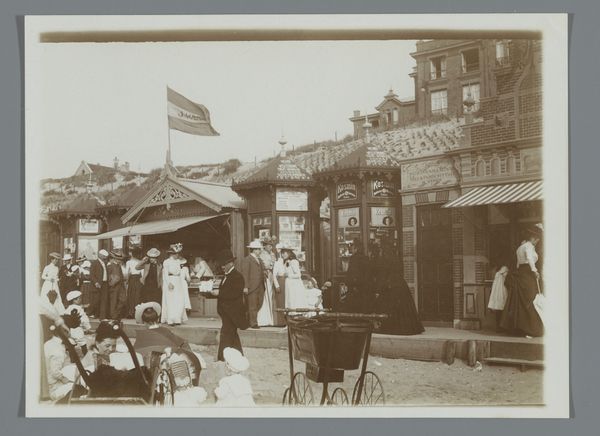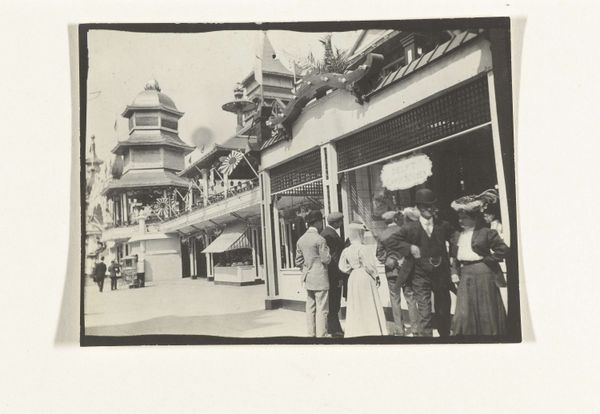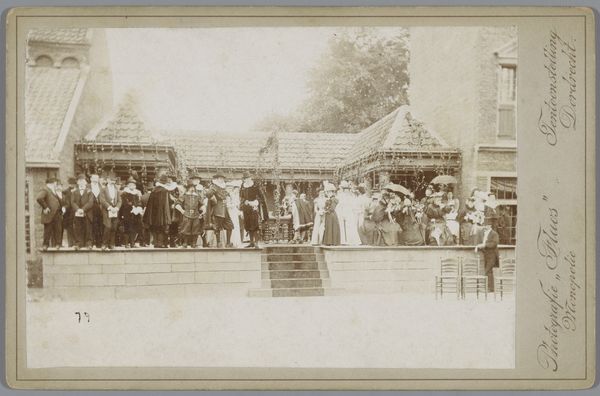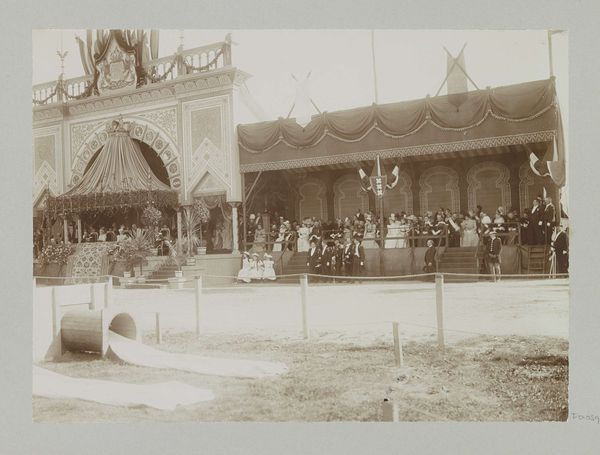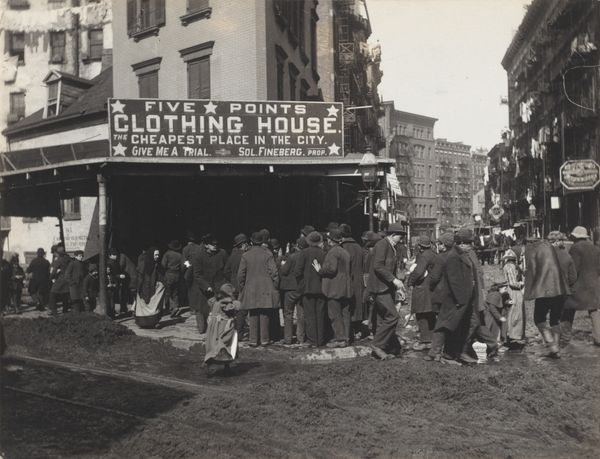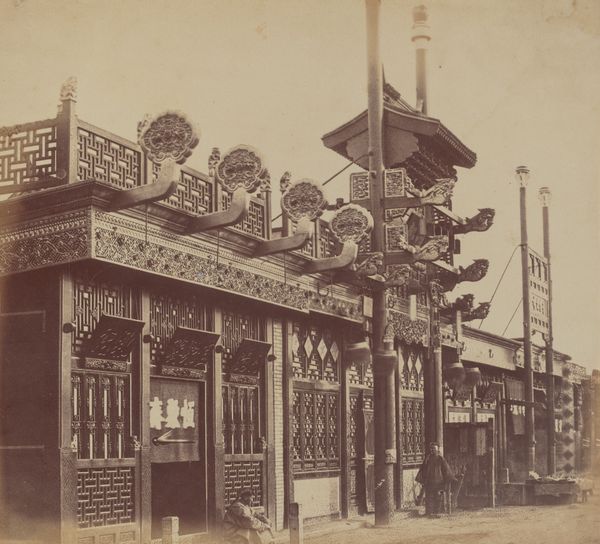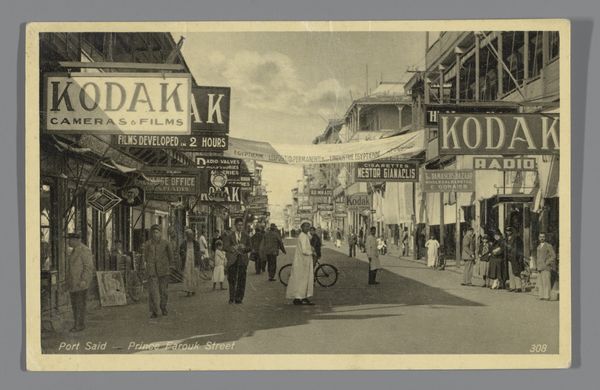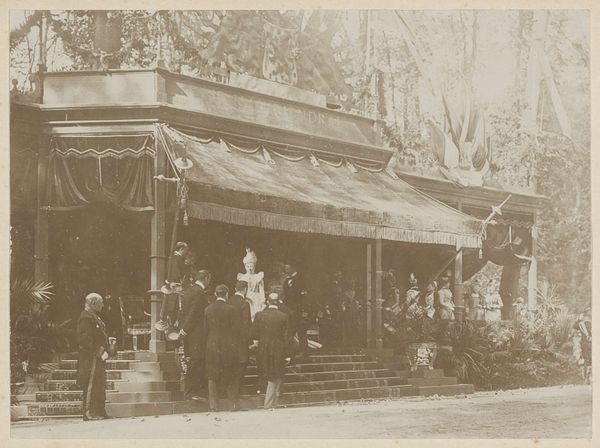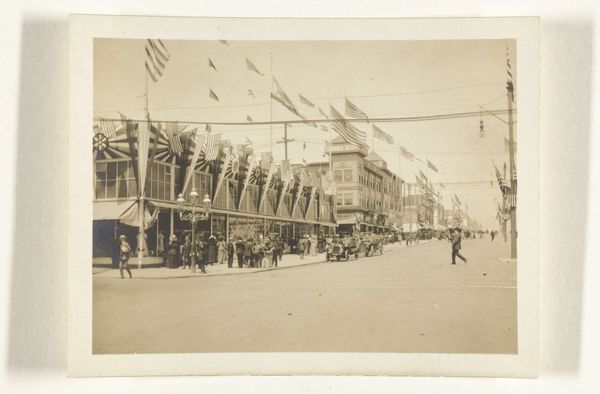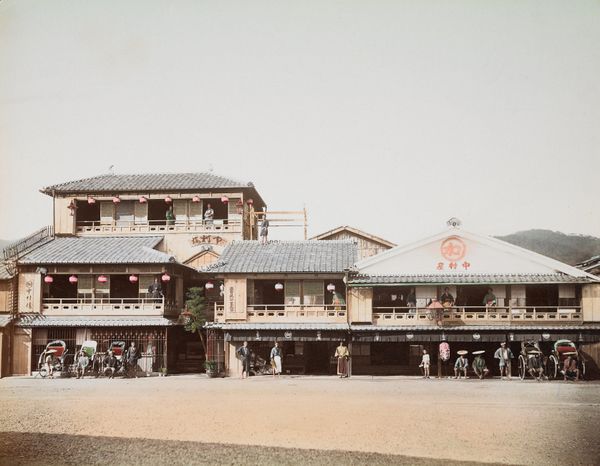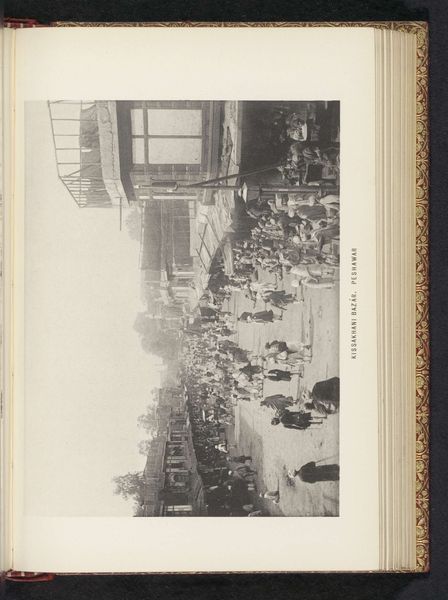
Groep mannen bij de Kitano Tenmangu tempel in Kyoto, Japan before 1903
0:00
0:00
kusakabekimbei
Rijksmuseum
Dimensions: height 210 mm, width 270 mm
Copyright: Rijks Museum: Open Domain
Curator: Here we have an albumen print titled "Groep mannen bij de Kitano Tenmangu tempel in Kyoto, Japan," taken by Kusakabe Kimbei sometime before 1903. The work now resides in the Rijksmuseum. What are your initial thoughts? Editor: Immediately, the layering strikes me. It feels like we're peeking into a space both sacred and communal, witnessing an everyday scene imbued with ritualistic weight. The framing, almost tilted, lends a documentary quality. Curator: The framing is intriguing, isn’t it? Note how Kimbei uses the temple’s architecture – the overhanging roof adorned with plaques – to create a visual framework. This directs our gaze toward the gathering of men beneath. Considering the albumen process, a popular photographic printing method in that era, this work signifies more than mere documentation. It's a carefully constructed scene intended for consumption by tourists. Editor: Absolutely. While presented as an objective view, these “genre scenes” are steeped in orientalist perspectives. The composition aestheticizes the local population as a passive backdrop within a meticulously ordered architectural space, all for a Western audience. It’s about selling a version of Japan. How much control did the subjects even have over their image here? Curator: It's true, those power dynamics must be acknowledged. However, focusing on symbolism, we see how the plaques might have meaning. I would love to know more about the painted depictions inside each frame. They could function as dedications or tell small anecdotal stories, weaving a larger narrative about cultural continuity and memory. Editor: The architecture as archive—fascinating. And thinking about that narrative, it's crucial we ask what's left out. Where are the women, for instance? Or members of other marginalized groups? Their absence is equally telling, reflecting the selective portrayal inherent in colonial narratives. Curator: A crucial point, which reminds us that even seemingly simple genre scenes from the past require careful unpacking. It’s a portal but one with a constructed view. Editor: Exactly. It’s a pretty, almost picturesque scene, yet also a document laden with cultural baggage. Makes you consider how every image involves choices. Curator: Indeed, Kusakabe Kimbei’s image stays with you long after you first encounter it. The albumen print encourages introspection and a closer study of cultural representation during a period of intense exchange and cultural interpretation.
Comments
No comments
Be the first to comment and join the conversation on the ultimate creative platform.
